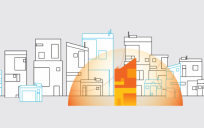Where you start with IoT will largely depend on your organization’s existing technical capabilities and program matter expertise. Successful IoT projects require some level of both. Luckily, most organizations likely already have this.
Government is not new to the IoT game, Sokwoo Rhee, Associate Director of Cyber-Physical Systems Innovation at National Institute of Standards and Technology , said. Most agencies, especially on the local level, have deployed things like smart water meters or energy sensors as a way to automate basic public services. They simply haven’t called them IoT.
“There are examples where they have to install completely new hardware [to explore IoT],” he said. “But typically, a community already has some sort of water meters employed, or they already have a transportation system that collects GPS signal, for example.”
In those instances, the first step into IoT isn’t deployment of new sensors. Agencies should instead take the time to learn what works in those programs, and what might be altered to improve a more sophisticated iteration of it.
Rhee also noted that there are some “no-brainers” for communities looking to engage with IoT. “For example, flood measurements and predictions, smart lighting, or smart water meters and utility meters. It’s almost a no-brainer now that you can save money or increase efficiency using those sensors,” he said.
If your agency is looking for a tried-and-true first step into the realm of IoT, these solutions can be a great starting point. Because many government organizations have already invested in these devices and programs, you’ll be able to find a number of public servant practitioners to share their insights and advice from their own experiences.
Plus, the project itself will be a low-risk way of learning IoT and gaining buy-in for future projects. “In many cases, that’s how you start because you don’t want to invest millions of dollars when you do not really know the outcome. When you are successful in those kinds of first few examples, that’s when the city will get into a more serious thought process,” said Rhee.
Nevertheless, many agencies will ultimately decide to pursue more niche or customized solutions. Especially for federal agencies, adopting the most popular IoT program might not be an option if they’re trying to meet a specialized mission. In those cases, the first step won’t be exploring sensors or devices to deploy.
If your agency is truly charting unexplored territory with IoT, you’ll want to start with data. At its heart, IoT is about collecting needed data to help agencies form complete insights and make decisions. Thus, your first step will be to understand what additional data your agency needs.
“If you have a lot of existing data or something that you’re already collecting, I would really take a look and see what’s missing from that data,” Christine Kendrick at the Bureau of Planning and Sustainability, City of Portland said. Once you know what data you would like to collect, you can start investigating sensors that can collect and translate that information for your agency.
“It’s a matter of figuring out what is underserved today out of the system or the infrastructure you already have,” Rhee said.
To learn more about the use of IoT in the public sector, check out our recent guide, Your FAQ to IoT in Government.





Thanks for sharing this, Hannah! Pretty cool to consider that many agencies have already employed IoT on a smaller scale through sensors.